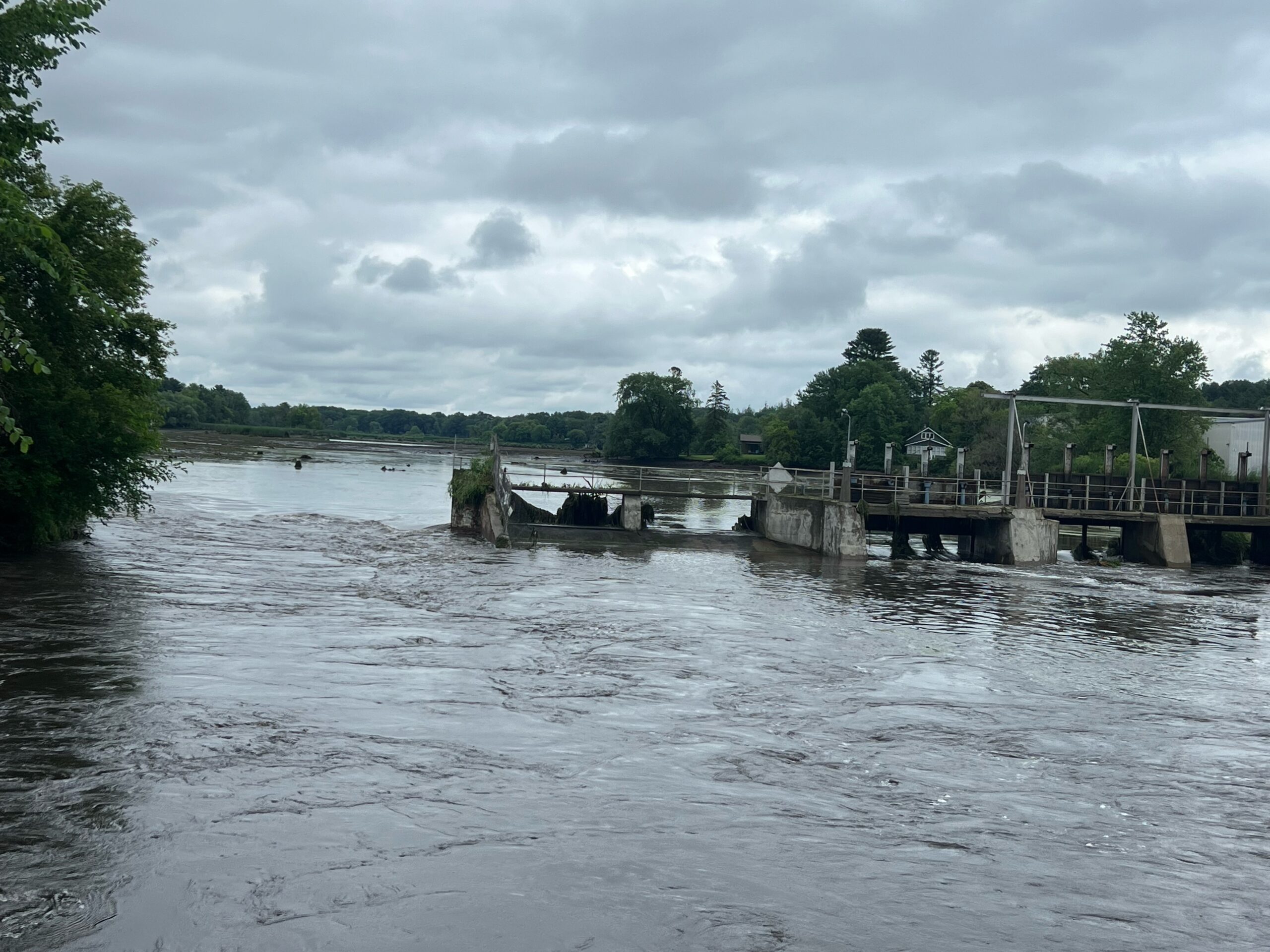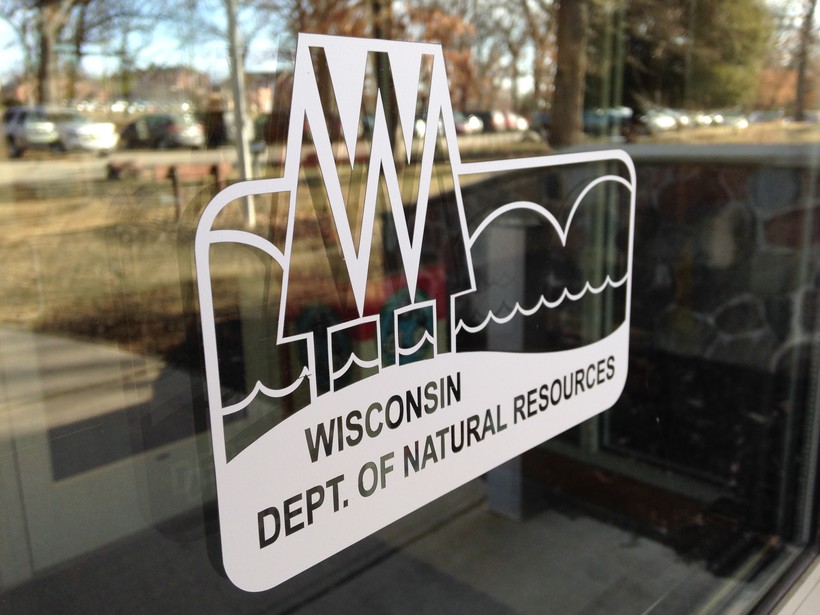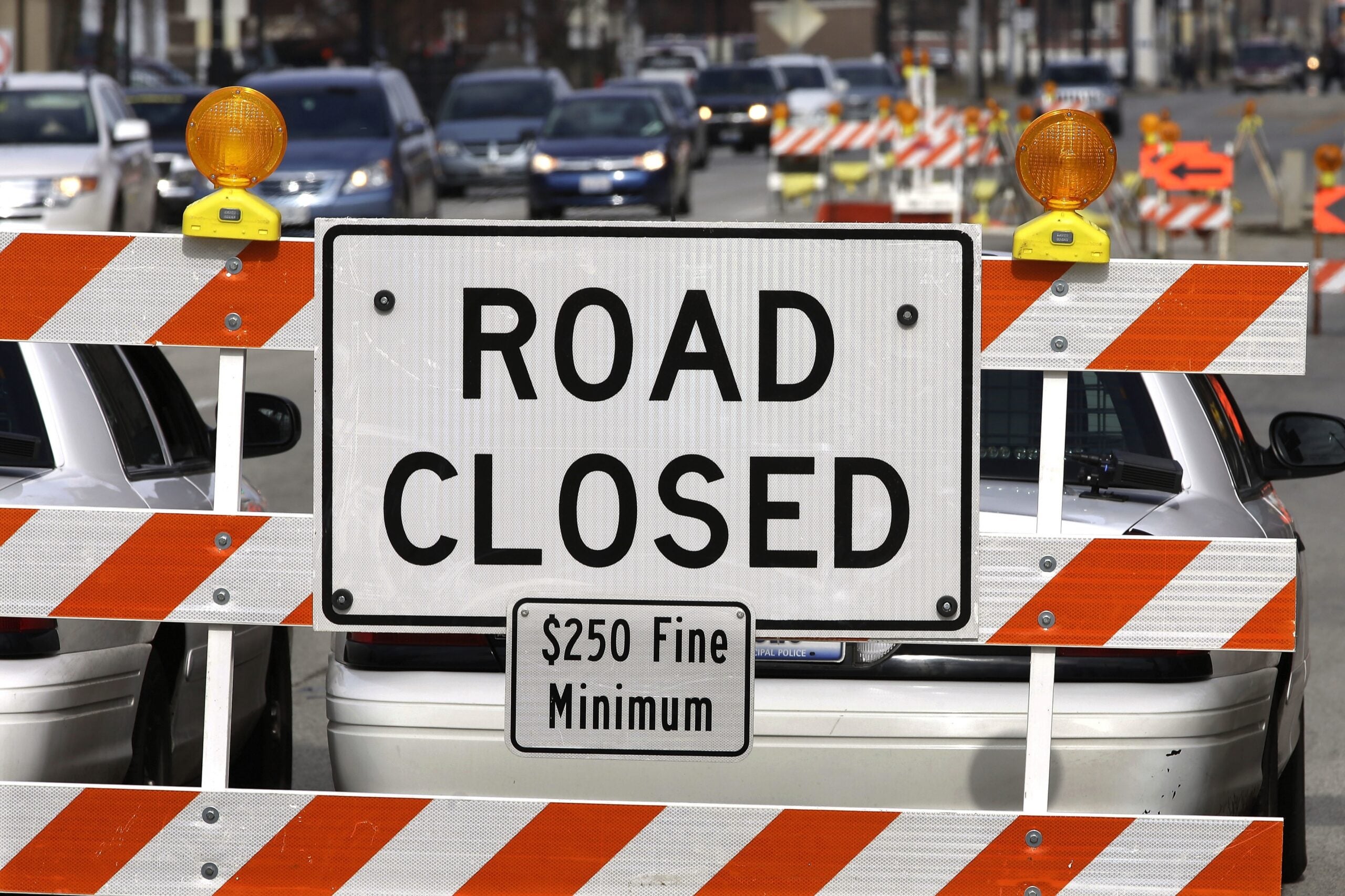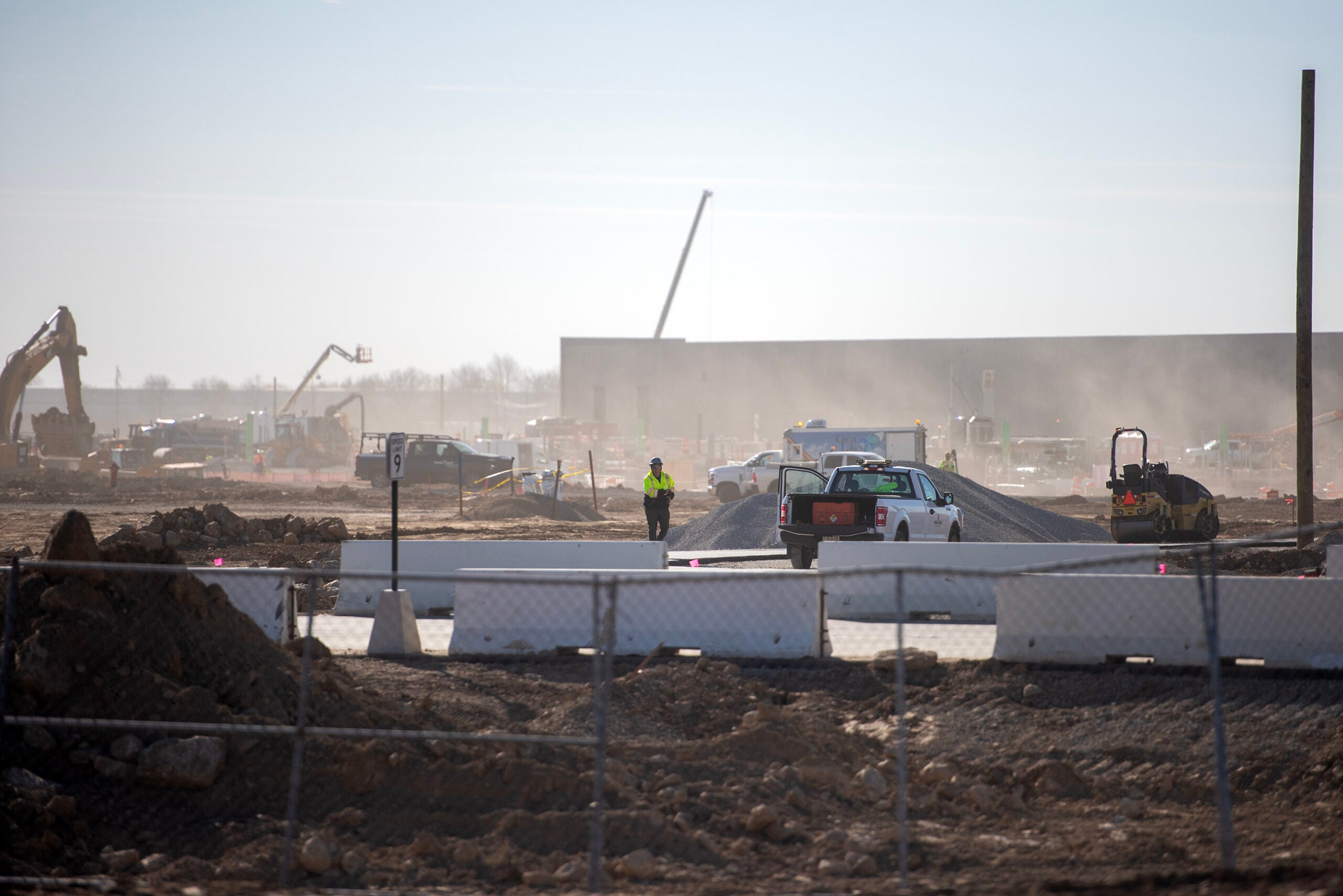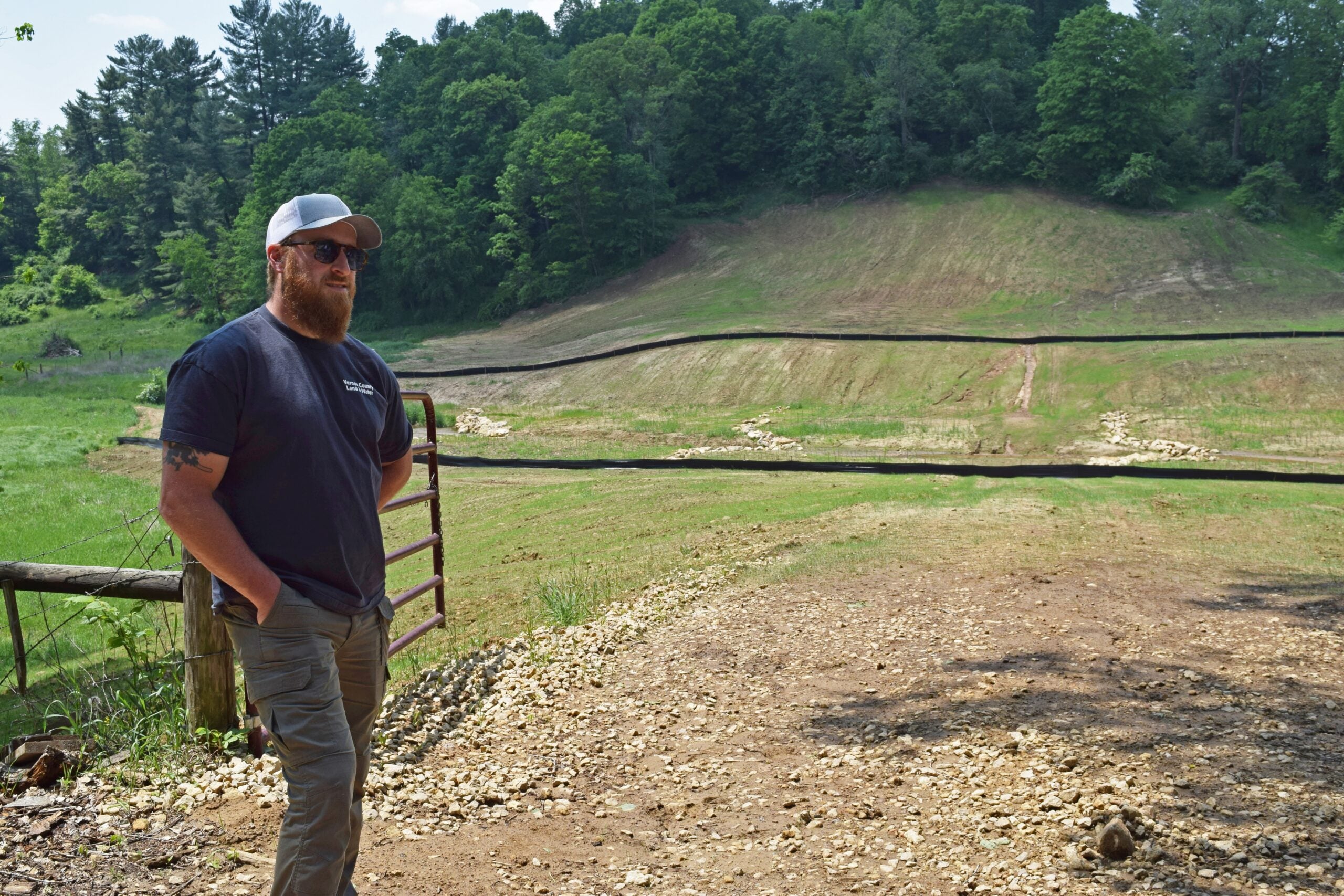Wisconsin ranks second in the nation for dam failures in the last two decades, raising concern over whether extreme storms driven by climate change may overwhelm them and communities downstream.
The findings stem from a report released Thursday by the Wisconsin Policy Forum. Researcher Mark Sommerhauser said they examined the issue after the partial failure of the Rapidan Dam in southern Minnesota during a close to 500-year flood event. The report also highlights the recent breach of the Manawa Dam in Waupaca County during a storm that caused around $6 million in property damage.
Wisconsin has more than 4,000 dams that range from hydroelectric to earthen dams. Since 2000, the state witnessed 34 dam failures through last year, according to the Association of State Dam Safety Officials. The state’s dam failures were second only to South Carolina, but researchers caution inspection and reporting practices may differ among states.
News with a little more humanity
WPR’s “Wisconsin Today” newsletter keeps you connected to the state you love without feeling overwhelmed. No paywall. No agenda. No corporate filter.
“Since 2000, most of those failures have happened here in the past five or six years,” Sommerhauser said. “Both Wisconsin’s rank among the states and the pace at which those dam failures seem to be accelerating.”
The association’s data shows 28 of the 34 failures have happened since 2018. More than half, or 18, have failed in the last four years. Climate scientists have found the last decade was the wettest on record in Wisconsin, according to the Wisconsin Initiative on Climate Change Impacts. At the same time, the state is seeing more frequent, intense storms. Rainfall has increased 17 percent since 1950.
“As the climate continues to change, I think the evidence is pretty strong that there’s going to be greater risk of more dam failures,” Sommerhauser said.
Even so, the report notes none of Wisconsin’s dam failures resulted in the loss of life or property damage beyond $100,000. Only three of the dams that failed were classified as high-hazard dams among roughly 1,000 of the state’s largest dams listed on a national inventory maintained by the U.S. Army Corps of Engineers. Sommerhauser said those are the dams that could cause the most damage to people living downstream in the event they failed.
According to the inventory, Wisconsin has 206 such dams. Only five were listed in poor or unsatisfactory condition, placing the state within the top 10 that have high-hazard dams in better shape.
However, the report states the number of dams with the potential to create the most damage have increased from 177 to 206 in the last three decades in Wisconsin.
As the number has grown, state funding for the municipal dam safety grant program has remained largely flat. Since 2009, the Wisconsin Department of Natural Resources has received $4 million to help local governments maintain their dams.
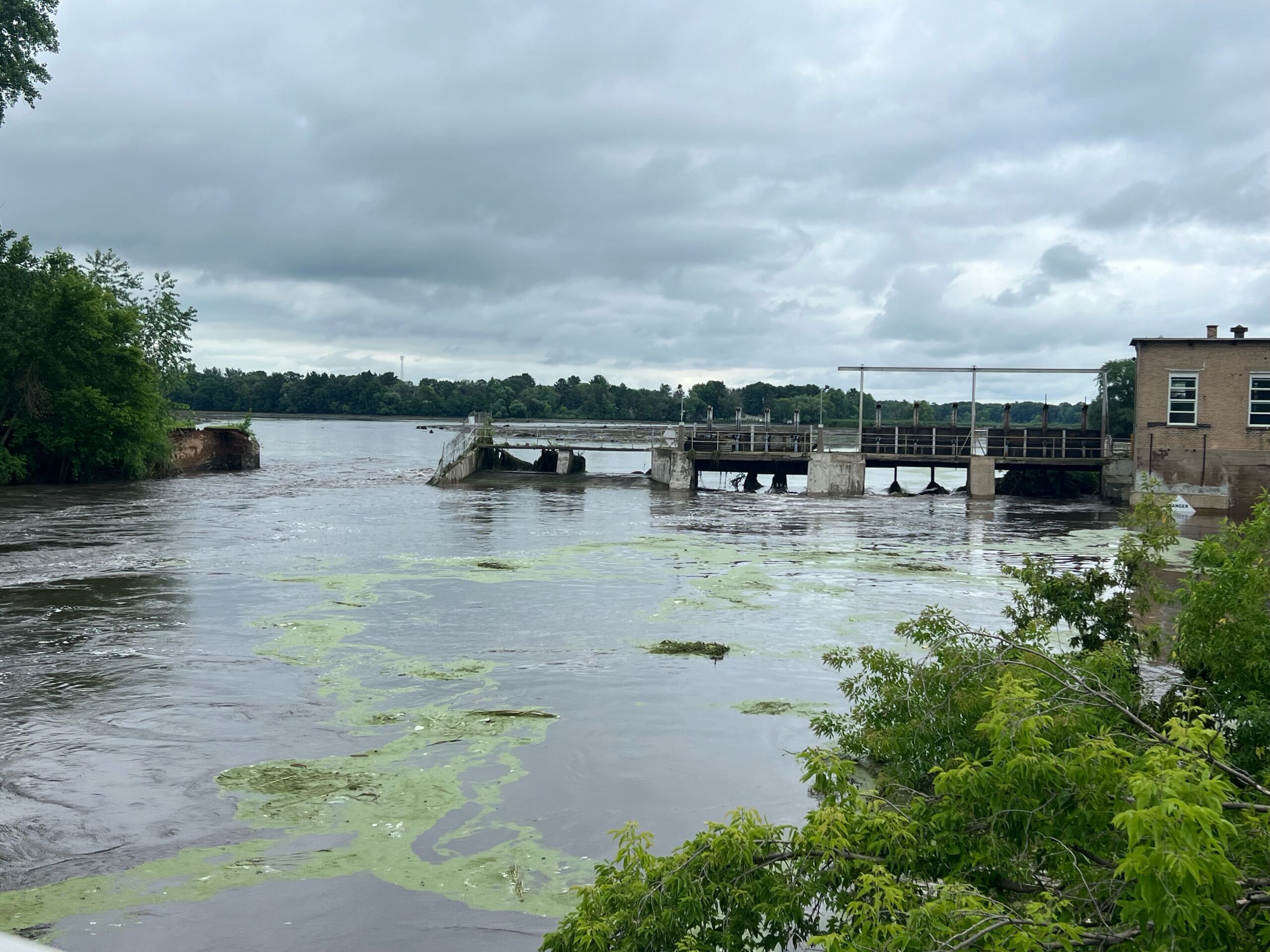
However, Gov. Tony Evers and the Republican-controlled Legislature provided $10 million under the 2021-2023 state budget. Evers proposed maintaining that funding level under the current two-year budget, but the Legislature’s budget-writing committee cut it back down to $4 million.
Uriah Monday, the state’s dam safety engineer, said lack of funding is a big challenge with addressing dams in need of repairs or replacement similar to roads, bridges and buildings.
“It’s infrastructure, and it ages. And as it ages, it becomes more unsafe,” Monday said. “Funding is definitely a part of that.”
Local governments own around 40 percent of the state’s roughly 1,000 dams on the national inventory. They also own about half, or 48 percent, of the state’s high-hazard dams. Even so, Monday noted the Manawa dam was a low-hazard dam that was in fair condition prior to flooding.
“Its failure was related to debris blockage in the gates and the inability to get gates open on time. So water came over the top of an earthen embankment,” Monday said. “When that happens, you greatly increase the risk of failure, even on a dam that’s in fairly good condition.”
Monday said the community is working with a consulting engineer to come up with design alternatives as officials hope to rebuild the dam. Even so, the project is expected to be costly.
The state typically receives around 20 or so applications each year for funding. The agency is usually able to fund 75 percent of applicants. However, he noted only seven of around 20 applicants were funded last year after the Legislature raised the limit for grant funds from $400,000 to $1 million.
The average age of the state’s 4,000 dams is around 80 years old, which includes those built before the 1900s through the 1970s. As for the number of recent failures, Monday noted that the agency has improved its database to better track dam conditions than in the past.
He noted a significant number of dams failed in southwestern Wisconsin during flooding in 2018. Northern Wisconsin also witnessed the failure of the Radigan Dam and Cranberry Creek Flowage Dam after flooding that summer.
The Natural Resources Conservation Service has recommended removing 23 dams in southwestern Wisconsin after a handful failed that year, saying they’re vulnerable to failure and too costly to repair or replace.
Monday likened the situation with dams to placing heavier trucks on an older bridge that needs maintenance.
“Infrastructure is aging,” he said. “If rainfall is increasing, then we’re fighting a battle on two fronts.”
Wisconsin Public Radio, © Copyright 2025, Board of Regents of the University of Wisconsin System and Wisconsin Educational Communications Board.

